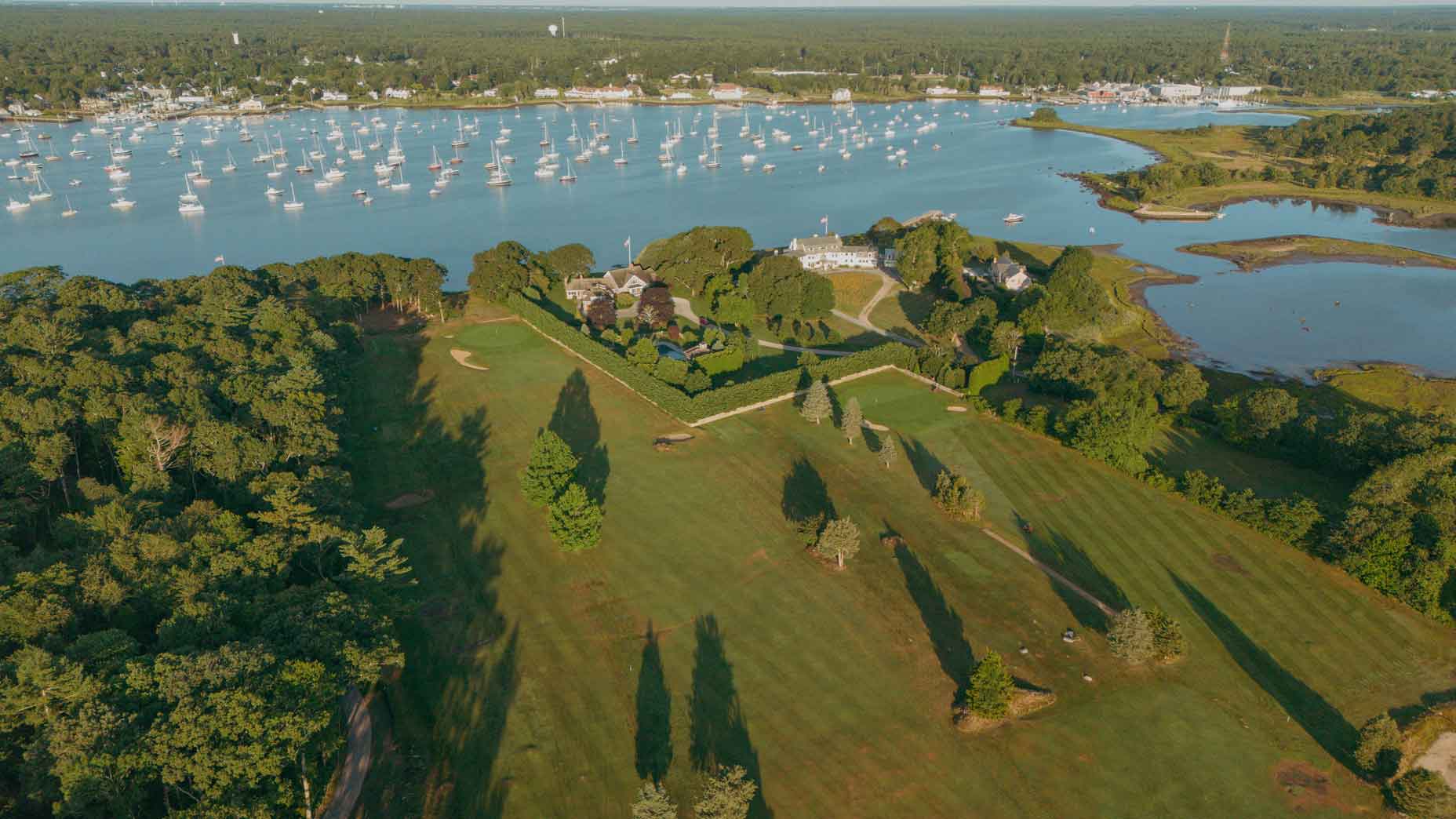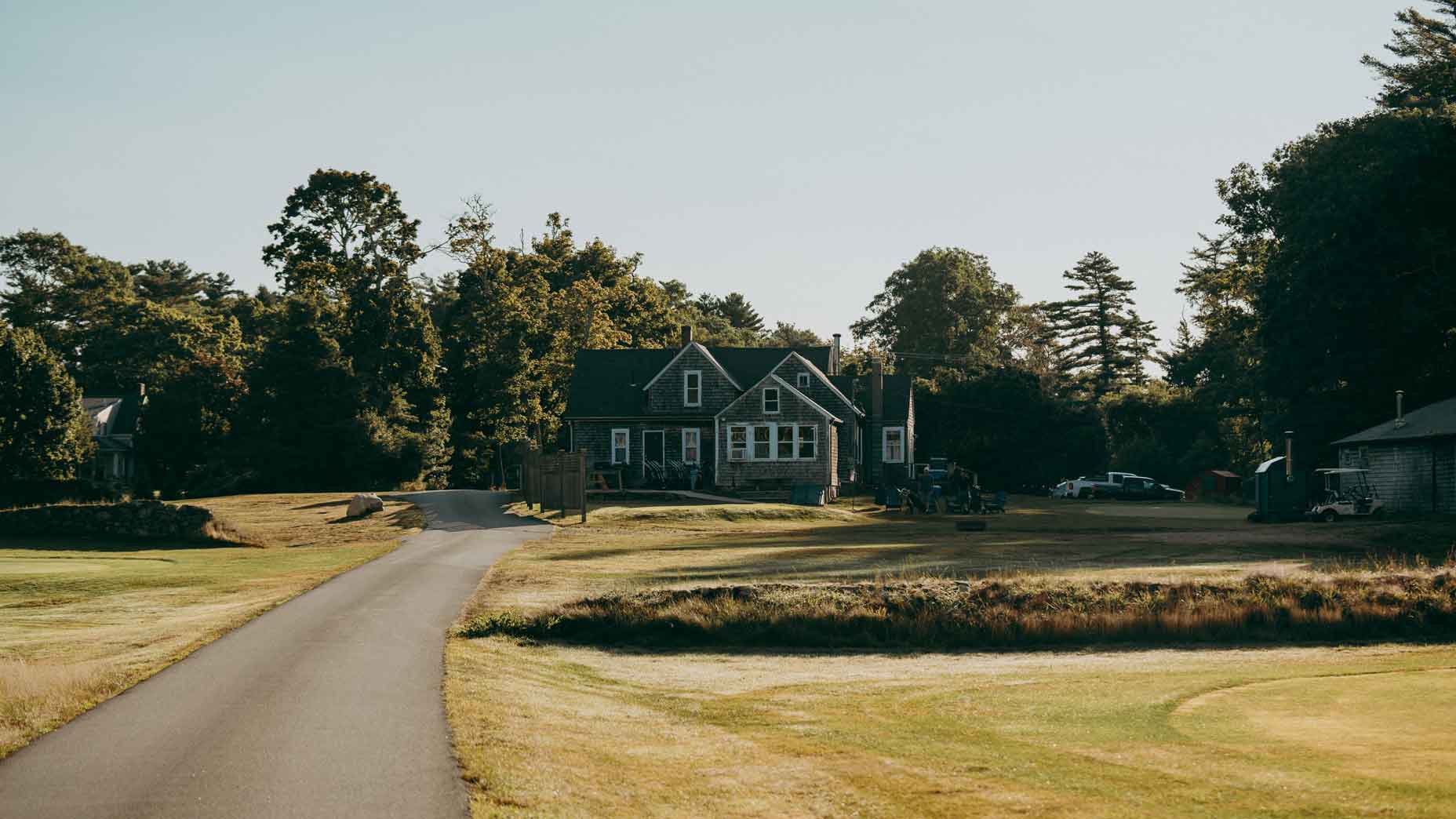
The one public course in a small city of the identical title, Marion has low inexperienced charges however a lofty pedigree.
Matthew Hart
Jeremiah Daly has by no means lacked for entry to nice golf, however he is aware of not everyone seems to be so fortunate, and he believes in leveling the enjoying subject.
His outlook owes partially to his upbringing in Marion, Mass., a small city south of Boston that’s residence to a pair of notable programs which sit simply miles aside however function in numerous worlds.
One is Kittansett, a prestigious non-public membership with a William Flynn design that has lengthy held a spot on U.S. Prime 100 lists. The opposite is Marion Golf Membership, a scrappy, 9-hole public format with lofty bloodlines of its personal. Accomplished in 1904, it was the primary course constructed by George C. Thomas, years earlier than he stamped his title on extra well-known work at Riviera, Bel-Air and Los Angeles Nation Membership.
Daly, who’s 42, grew up enjoying each.
Early on, he says, “I used to be not attuned to their pedigree.” By the top of highschool, although, as his curiosity in golf structure deepened, he got here to appreciate “how wonderful it was that this little city had a Flynn and a Thomas.”
How the Thomas design stayed afloat was spectacular, too. From the time Daly first performed it, Marion GC had been cared for on a shoestring by Bruce and Sue Carlson, a husband and spouse who lived on website in a wood-framed residence that doubled as the professional store. On a property with no built-in irrigation, Bruce would rise earlier than the solar to hand-water the greens.
If the country maintenance lent the course a throwback appeal, it additionally made it simpler to take the place with no consideration.
“It was not a vacation spot,” Daly says. “However lots of people in the neighborhood performed it. It was the one public course on the town.”
Years handed. Daly went to school, after which on to a profession in finance, settling elsewhere in Massachusetts. However he saved his ties to Marion and its two programs. And he saved up with the information.
By early 2020, phrase was out that Marion had reached a breaking level. After a long time of tending to the day-to-day, the Carlsons had determined to surrender their duties and nobody appeared prepared to exchange them. The course was held in a personal belief. Beneath its provisions, if the land couldn’t be maintained for public golf, it was meant to be transformed right into a park.
Daly was allergic to that concept. In partnership with Michael Kane, a good friend and fellow Kittansett member who shared his comfortable spot for the native 9-holer, Daly took over the Marion lease, sealing the deal the week the world shut all the way down to Covid. Two months later, when the state allowed golf programs to renew operations, “we set off on our journey,” Daly says.
The mission was two-fold: “To mud off an outdated piece of artwork for followers of golf-course structure, and protect the neighborhood side of it as effectively.”
For higher and worse, within the century-plus since Thomas designed it, the course had been left just about untouched. The primary order of enterprise was to put in irrigation below all of the tees and greens, adopted by refinements of light options: clearing bushes to declutter enjoying corridors; uncovering bunkers that turf had taken over; enlarging greens that had shrunken into small circles through the years.
Two full-timers got here aboard, a superintendent named Jeff Mello, and Daly’s youthful brother, Will, who switched careers mid-stride, abandoning his job in cyber safety to develop into director of golf operations. The bootstrapping effort was simple to root for. Locals volunteered for fundamental upkeep duties. The USGA provided its experience with a pro-bono cease that lately was a three-visit consultancy on all the pieces from water administration to aeration plans — vastly improved situations inside a modest price range.

Matthew Hart
“It’s an every-person’s golf course,” says Elliott Downing, an agronomist with the USGA and the governing physique’s level individual on the venture. “Preserving it reasonably priced and accessible was a key purpose from the beginning.”
4 years because it stood on the point of closure, the course is nowhere shut to totally restored, nevertheless it’s been dusted off sufficient for its magnificence to shine by means of. A par-34 that stretches simply lower than 2,700 yards, its design is catnip for structure nerds, with such time-capsule traits as outdated stone partitions that come into play on eight of 9 holes. Shades of North Berwick by Buzzards Bay.
“It’s charming, cozy and super-interesting,” says Jonathan Sirois, a highschool trainer and golf coach at close by Tabor Academy, who has been a Marion common for greater than a decade. “And the greens, which had been all the time surprisingly good, are actually distinctive. The entire place is punching effectively above its weight.”
The place it isn’t hitting arduous is with its worth. Within the wake of upgrades, inexperienced charges have jumped by all of $7. It’s $23 for a 9-hole loop, and $35 to go round twice. For $50, you may play all day. A $350 junior membership permits limitless entry all year long.
The worth, in return, is hard to quantify. Like many low-barrier-to-entry layouts, the course gives neighborhood connective tissue with tournaments and impromptu outings. Rituals have shaped round it. A solstice occasion. A one-club competitors. A semi-cutthroat sport of Wolf contested weekly amongst pals.
Restorations, in the meantime, are ongoing. Gil Hanse, the acclaimed architect who first noticed Marion whereas engaged on Kittansett within the mid-Nineties, has been engaged to draft a long-term plan geared toward getting all of the Thomas particulars proper.
Because of elevated rounds and rising merchandise gross sales, the course, Daly says, is now near breaking even. However turning a revenue has by no means been the purpose. The intent from the beginning, and into the longer term, is to pour all proceeds again into the course.
“In case you’re into structure, there’s loads to like about this place,” Daly says. “However greater than something, we wish it to be a course for everybody.”
Take a look at our new record of America’s greatest golf programs for $100 or much less.














